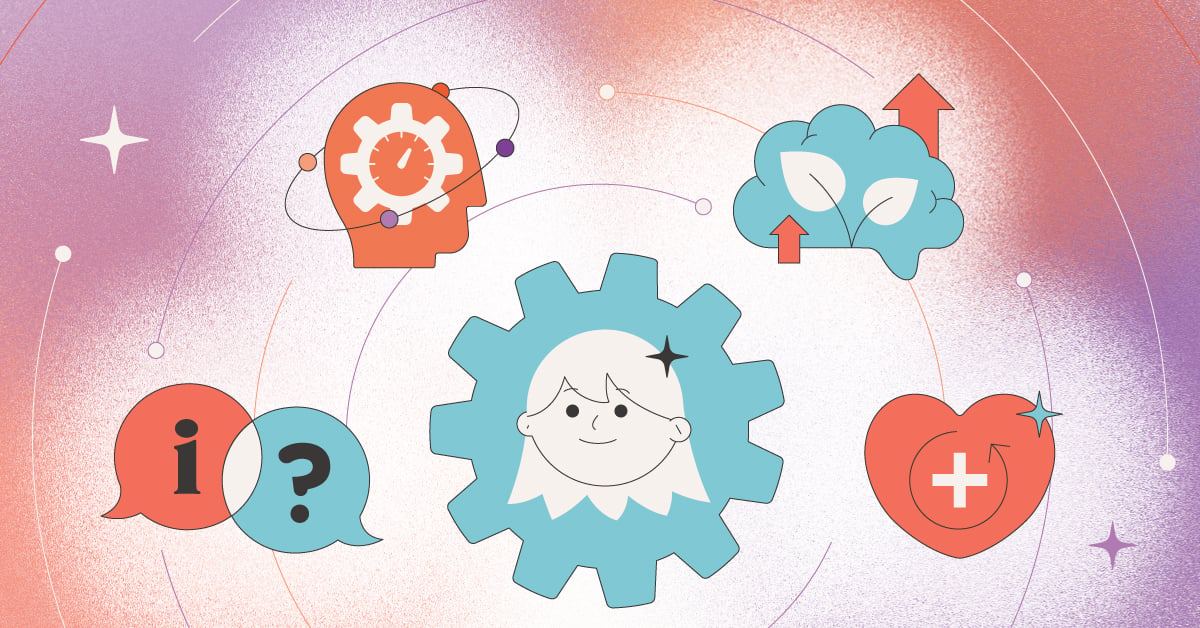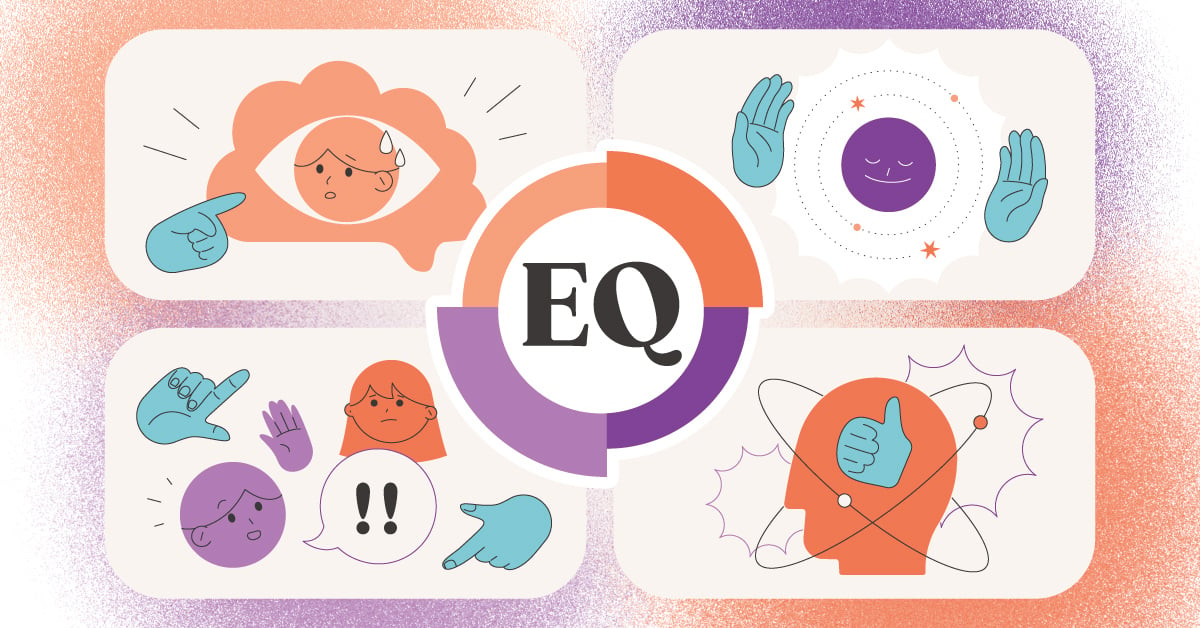
Emotional hijacking is when your emotions are elevated to a point where you are no longer thinking rationally, hence ‘hijacking’ your decision making skills.
To best understand emotional hijacking, remember the Clear Glass concept. Simply, a clear glass means you are experiencing no elevated emotions. A cloudy glass means slightly heightened emotions, while a red glass means elevated emotions.
Emotional hijacking moves your glass from Clear to Cloudy OR Red. “Heightened emotions don’t necessarily need to be negative,” explained Favor Larson, a Senior Business Services Consultant and EQ trainer at TTI SI. “Think of a kid on Christmas Eve, too excited to sleep. That’s an example of a positive heightened emotion. However, most of the time when your glass isn’t clear, you’re experiencing a negative reaction, since humans are wired towards negative responses as a survival mechanism.”
How Do You Stop Emotional Hijacking?
The problem with emotional hijacking is that it usually results in behavior that we’re not proud of. Losing your temper, berating your teammates, yelling at your children, or even breaking something in frustration all show that you have been emotionally hijacked. This kind of behavior is harmful for your relationships with others and your relationship with yourself.
If you catch yourself engaging in this sort of behavior, you need to do something about it. Here are the 3 steps you can start taking now to overcome emotional hijacking.
What do each of these really mean?
Increase Awareness
Increasing awareness is the key to a lot of self development and understanding. It’s especially crucial here. After all, if you find yourself in the midst of a meltdown, you need to understand how exactly you got there.
Your first step to increasing your awareness is to learn more about emotional intelligence. A great way to do this to take an EQ assessment. This assessment measures 5 factors of emotional intelligence: self awareness, self regulation, motivation, social awareness, and social regulation. Getting some data behind your behavior will likely help you understand your own motivations and behaviors better.

One of the exercises Favor told me about that she leads in our EQ training is called the timer exercise. Set random timers throughout your day and when they go off, record your mood. Over time, you begin to see patterns in your behavior and routine.
Do you often lose your cool or feel down in the dumps in the afternoon? This might be a result of low blood sugar. Are your mornings full of frustration and interruptions? Restructure your routine to give yourself time to wake up before you start working. Only you really know your own needs, but by jarring yourself out of your routine with the timer, you can start to increase awareness of your signals from your body and from your day-to-day.
Find the Trigger
Ok, so you have more awareness of what’s happening, it’s time to understand why. Your body and your brain are working together to give you signals throughout your day. What else is lining up with those signals?  Favor explained that humans are wired towards negative behavior as a survival mechanism. This same proclivity shows up when we think about Dr. John Gottam’s magic ratio. While his research focused primarily on couples and marriage, it showed something that might be a little shocking: it takes five positive interactions to offset one negative interaction, or, to use our metaphor from earlier, to take your glass from red or cloudy back down to clear.
Favor explained that humans are wired towards negative behavior as a survival mechanism. This same proclivity shows up when we think about Dr. John Gottam’s magic ratio. While his research focused primarily on couples and marriage, it showed something that might be a little shocking: it takes five positive interactions to offset one negative interaction, or, to use our metaphor from earlier, to take your glass from red or cloudy back down to clear.
Are you surprised? I was! I know the power of positive thinking is important, but it seems that it’s just not as powerful as the effects of negative thinking. It might be disheartening to think about how little control you actually have over your own emotional reactions to your environment and others. By the time you realize what’s going on, your body is already experiencing the chemical reaction from the negative experience. It can take hours for your stress reactions in your body to decrease.
Don’t worry! You are now well prepared for step 3.
Address the Behavior
You know the feeling, you know the cause — now change behavior to change both. A simple way to do this is to create a ‘positivity bank’ and use it to get yourself back to level zero. The goal isn’t to re-elevate your emotions positively, it’s simply to get you back to clear.
“We call these actions in your positivity bank emotional enablers,” Favor explained. “These enablers help you refocus and reframe any conflict you’re experiencing.”
Let’s use a real example; you have a Zoom meeting where a coworker makes a snide remark about a project of yours. You get off the call feeling embarrassed, frustrated, or even angry.
What can you do? Turn to the positivity bank, a list of activities and actions you have compiled that you know boost your mood. Choose five and get started!
After you complete those five actions, you should feel your emotional state start to regulate. It might seem like a lot of work, but the research shows that this is what it takes to return to a neutral state after negative interactions. If you internalize the negative experience and push through, that pressure will build until your glass becomes cloudy or red. Don’t take that risk!
Here are a few ways to get started from the TTI SI team:
- Watch a funny video on Youtube
- Express gratitude (list 5 things you’re grateful for)
- Work in a different room for a change of scenery
- Write in a journal for 10 minutes
- Play with and talk to your pets
- Make yourself a delicious snack
- Read kudos you’ve received in the past
- Make a list of things you’re proud of
- Exercise (jumping jacks are a great way to quickly up your blood flow!)
- Look at pictures of your loved ones
- Take 5 deep breaths
- Get on a quick call with a friend
- Send someone a text telling them you’re thinking of them
- Write a letter and send some snail mail
- Go for a brief walk and really focus on your natural surroundings
- Meditate
- Read affirmations
- Drink water to make sure you’re hydrated
- Make some art! Doodle, paint, or play with clay for a few minutes
These ideas are just a launching point for you to build your own positivity bank. The important thing is for you to actually do it! While it might feel silly, prioritizing your emotional stability and clarity is crucial for your productivity and long term success.
What’s Your Next Step to Overcome Emotional Hijacking?
Just by increasing your awareness of the concept, you’re already on your way to overcoming emotional hijacking. If you’re a member of our network, expand your understanding of the concept and of EQ in general at our next EQ training. Contact your Business Development Consultant to get signed up today!
If you’re a consultant looking for tools like TTI SI assessments in your practice, get the information you need about joining the network as a reseller here.
Remember, at the end of the day, you are the one in control of your emotions. “Take control and don’t be a victim to your cognitive state!” encouraged Favor. “By increasing your awareness and mindfulness, you will only improve your reactions and understanding of yourself.”




